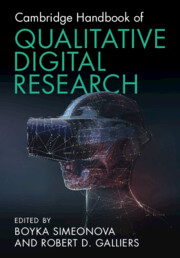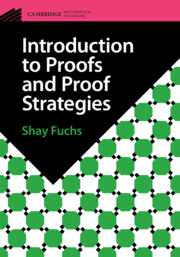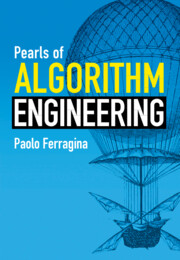Refine search
Actions for selected content:
48278 results in Computer Science
Kinematic directional index for the performance of redundant manipulators
-
- Article
-
- You have access
- Open access
- HTML
- Export citation
UNPRINCIPLED
- Part of
-
- Journal:
- The Review of Symbolic Logic / Volume 17 / Issue 2 / June 2024
- Published online by Cambridge University Press:
- 13 June 2023, pp. 435-474
- Print publication:
- June 2024
-
- Article
-
- You have access
- Open access
- HTML
- Export citation
Toward low-cost automated monitoring of life below water with deep learning
-
- Journal:
- Environmental Data Science / Volume 2 / 2023
- Published online by Cambridge University Press:
- 13 June 2023, e13
-
- Article
-
- You have access
- Open access
- HTML
- Export citation
A review on gait generation of the biped robot on various terrains – CORRIGENDUM
-
- Article
-
- You have access
- HTML
- Export citation
Kinematics of the Hybrid 6-Axis (H6A) manipulator
-
- Article
-
- You have access
- Open access
- HTML
- Export citation
Archaeology of random recursive dags and Cooper-Frieze random networks
- Part of
-
- Journal:
- Combinatorics, Probability and Computing / Volume 32 / Issue 6 / November 2023
- Published online by Cambridge University Press:
- 13 June 2023, pp. 859-873
-
- Article
- Export citation
Co-designing with engineers for community engagement in rural Uganda – CORRIGENDUM
-
- Journal:
- Design Science / Volume 9 / 2023
- Published online by Cambridge University Press:
- 13 June 2023, e15
-
- Article
-
- You have access
- Open access
- HTML
- Export citation
Exploring the impact of set-based concurrent engineering through multi-agent system simulation
-
- Article
-
- You have access
- Open access
- HTML
- Export citation
A fourth way to the digital transformation: The data republic as a fair data ecosystem
-
- Journal:
- Data & Policy / Volume 5 / 2023
- Published online by Cambridge University Press:
- 12 June 2023, e21
-
- Article
-
- You have access
- Open access
- HTML
- Export citation
Data collaborations at a local scale: Lessons learnt in Rennes (2010–2021)
-
- Journal:
- Data & Policy / Volume 5 / 2023
- Published online by Cambridge University Press:
- 09 June 2023, e20
-
- Article
-
- You have access
- Open access
- HTML
- Export citation
On the number of error correcting codes
- Part of
-
- Journal:
- Combinatorics, Probability and Computing / Volume 32 / Issue 5 / September 2023
- Published online by Cambridge University Press:
- 09 June 2023, pp. 819-832
-
- Article
- Export citation
A resampling-based method to evaluate NLI models
-
- Journal:
- Natural Language Engineering / Volume 30 / Issue 4 / July 2024
- Published online by Cambridge University Press:
- 09 June 2023, pp. 793-820
-
- Article
-
- You have access
- Open access
- HTML
- Export citation
Spanning
 $F$-cycles in random graphs
$F$-cycles in random graphs
- Part of
-
- Journal:
- Combinatorics, Probability and Computing / Volume 32 / Issue 5 / September 2023
- Published online by Cambridge University Press:
- 09 June 2023, pp. 833-850
-
- Article
- Export citation
Evaluating probabilistic forecasts for maritime engineering operations
- Part of
-
- Journal:
- Data-Centric Engineering / Volume 4 / 2023
- Published online by Cambridge University Press:
- 09 June 2023, e15
-
- Article
-
- You have access
- Open access
- HTML
- Export citation
Unimodular random one-ended planar graphs are sofic
- Part of
-
- Journal:
- Combinatorics, Probability and Computing / Volume 32 / Issue 6 / November 2023
- Published online by Cambridge University Press:
- 09 June 2023, pp. 851-858
-
- Article
- Export citation

Cambridge Handbook of Qualitative Digital Research
-
- Published online:
- 08 June 2023
- Print publication:
- 22 June 2023

Introduction to Proofs and Proof Strategies
-
- Published online:
- 08 June 2023
- Print publication:
- 22 June 2023
-
- Textbook
- Export citation

Pearls of Algorithm Engineering
-
- Published online:
- 08 June 2023
- Print publication:
- 22 June 2023
Part IV - Concluding Remarks
-
- Book:
- Verifiable Autonomous Systems
- Published online:
- 25 May 2023
- Print publication:
- 08 June 2023, pp 239-240
-
- Chapter
- Export citation
7 - Multi-Agent Auctions
- from Part II - Applications
-
- Book:
- Verifiable Autonomous Systems
- Published online:
- 25 May 2023
- Print publication:
- 08 June 2023, pp 83-103
-
- Chapter
- Export citation















